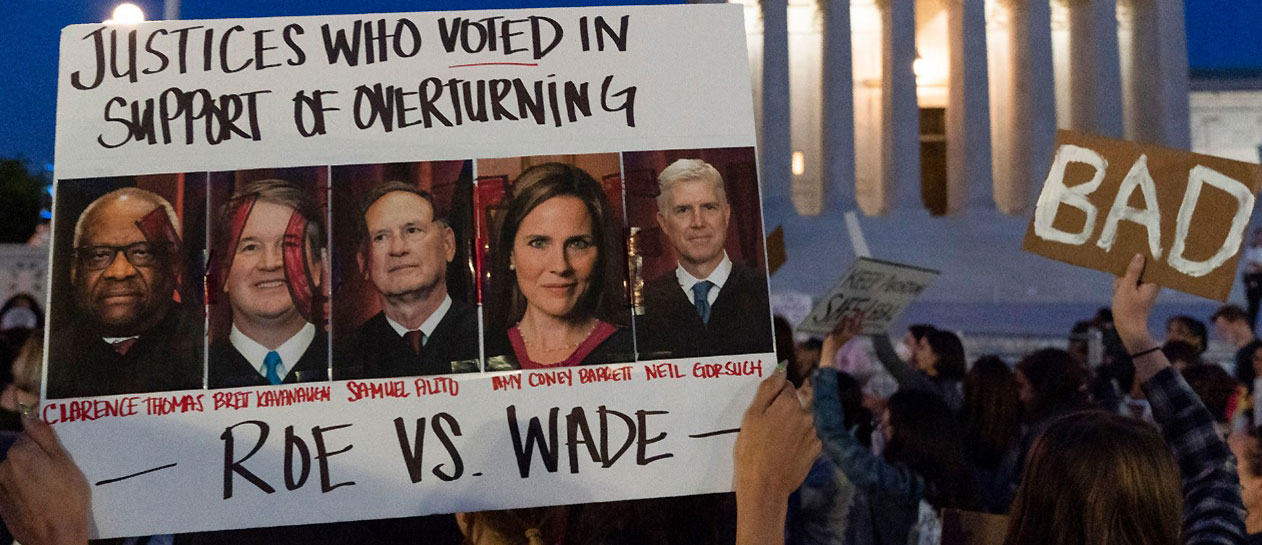 (Illustration found here).
(Illustration found here).
America might be entering a open-ended minority rule over the vast majority. The Republican party and right-winger voters are the minority, but the twist this November could change all that — a minority ruling the deep-set majority.
As Republicans stand steadfast on guns, the vast majority of Americans — 70-percent of citizens think gun control takes precedent over gun ownership (ABC News/Ispos poll out yesterday) — want to enact gun-control laws, want to chamber-down the killings.
And on abortion — 64-percent don’t want Roe v. Wade overturned (Washington Post/ABC News poll early last month).
Leading the charge of the whiplash judicial system is a push to the hard right by the Supreme Court of the US — against the wishes of America. There’s an unbalance in the system.
Sarah Warbelow, the legal director for the Human Rights Campaign, which advocates for LGBTQ rights noted the spin: ‘“The Court seems to be pulling the United States back into a prior era without regard for changing notions and understandings of equity, equality, and fairness … It is about almost trying to maintain a 1940s, 1950s view of what the United States is and what its obligations are to its citizens.”‘
As SCOTUS is expected to issue some seriously-shitty legal shit in the coming days, including overturning Roe v Wade, some survey-research results published today at PNAS (Proceedings of the National Academy of Sciences of the United States of America) reveal SCOTUS’ ethically, morally and legally now goes against the grain of the majority of Americans.
Also, those Americans haven’t a clue to how right-winged the court has become in just a couple of years. Read the whole report, a combo of science and bleak political/social data — this the Abstract:
Has the US Supreme Court become more conservative than the public? We introduce results of three surveys conducted over the course of a decade that ask respondents about their opinions on the policy issues before the court.
Using these data, we show that the gap between the court and the public has grown since 2020, with the court moving from being quite close to the average American to a position that is more conservative than the majority of Americans.
Second, in contrast to findings showing consistency in the public’s approval of or deference to the court, we find that the public’s expectations of the court vary significantly over time and in tandem with changes in the court’s composition and recent rulings. Even so, many members of the public currently underestimate the court’s conservative leaning.
Third, we find that respondents’ perceptions of the court’s ideology relative to their own are associated with support for institutional changes but with important differences between Democrats and Republicans.
The fact that so many people currently underestimate how conservative the court is implies that support for proposed changes to the court may be weaker than it would be if people knew with greater accuracy the court’s conservative nature.
And here we are in the summer of an unknown future.
Once again, here we are…
 (Image out front by illustrator and portrait painter, Tim O’Brien, and can be found here).
(Image out front by illustrator and portrait painter, Tim O’Brien, and can be found here).